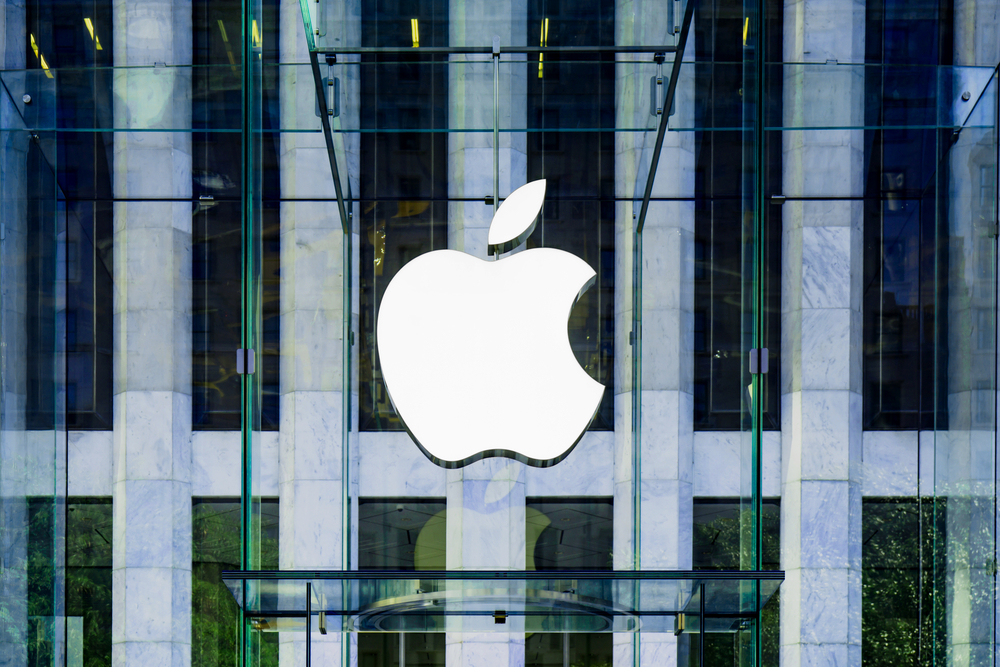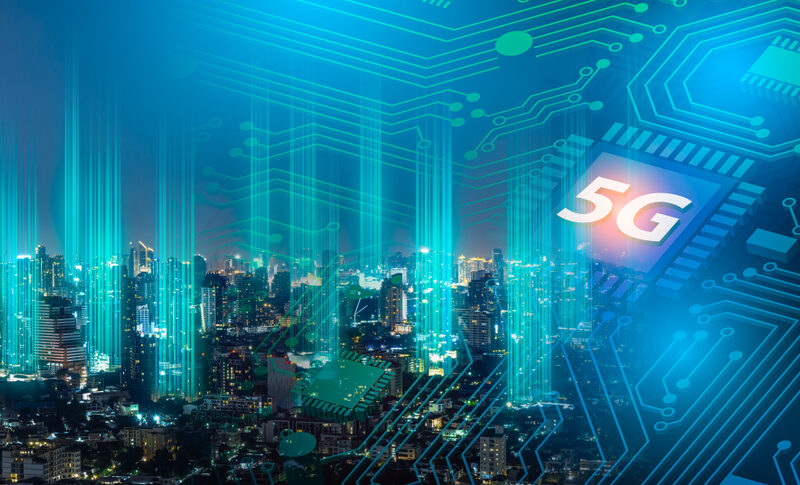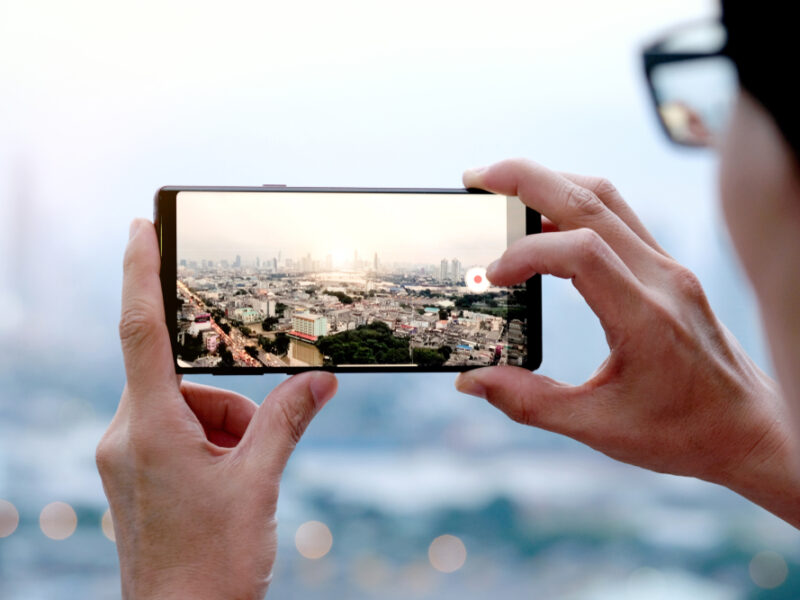Apple’s gadgets like watches, upcoming smart glasses, and iPhones are increasingly turning into extensions of our bodies and minds. For big tech, it is a dream come true; however, could it change into a nightmare?
When the Covid-19 pandemic started, engineers from Apple joined forces with Google, which doesn’t happen often. They aimed to set up a mechanism that could monitor personal communications through a whole population, to begin isolating carriers of an illness who were likely to be infectious of this disease that the globe was realizing could be transmitted by asymptomatic patients.
The result was an exposure notification tool that was produced very fast; it has not yet, however, demonstrated its usefulness. The NHS Covid-19 app and others throughout the world use it. Due to lockdowns, interactions are limited, which restricts the tool’s helpfulness. In a government where the spread is out of our control, it is not sufficiently strong to maintain low R numbers. When the conditions are suitable in the Goldilocks Zone it might save lives.
During its inception, the NHS Covid-19 app experienced challenges. It has been criticized for failing to be compatible with older phones and its impact on battery life. However, there is one criticism it has not faced; what if you leave the house without your phone? It is a rare occurrence. It is highly believed that we can monitor people’s movement by tracking their phones, and this fact has been embraced.
Tech firms like Apple have thrived this year. The widespread worldwide lockdowns have made us depend more on our devices. Although Apple is among the initial big firms to be severely impacted by Covid as China’s factory closures affected its supply chain putting on hold iPhone 12’s launch by one month, its profits are still record-breaking.
It is still the hugest publicly-traded firm in the globe, by a significant percentage; its worth has increased by 50% to $2tn (£1.5tn) this year and it remains $400bn bigger than Microsoft, which ranks second. It is difficult to think of another item that can compete with the iPhone in terms of how close it is to us physically as we go about our business every day. Our contact lenses, implanted medical devices and spectacles are some of the personal items we have that surpass our phones
It has escaped our attention, but Apple has transformed us into beings that exist side by side with technology; half-human, half-machine. Now we outsource our to-do lists, calendars, and contact books to devices. It is not necessary for us any more, to recall simple facts about the globe; all we need to do is call them when the need arises.
However, if you believe that wearing an Apple watch that monitors your actual vitals or walking around with a smartphone is not sufficient to change you into a cyborg, you might think otherwise when you learn what the firm has in the pipeline next.
For one decade, a pair of smart glasses were being created. They may be launched as early as 2022, and they would help us practically view the globe through Apple’s lens, placing a digital barrier between the world and us. The activists are already anxious about the privacy anxieties trigged by a camera on each person’s face. However, more crucial queries might not come up about how we are going to relate to a technology that acts as a mediator between all our interactions with the globe until nothing can be done about the response.
Nathan S. Kline and Manfred E. Clynes coined the term cyborg, which is short for ‘cybernetic organism.’ They conducted a study about spaceflight, and it led them to discover how integrating mechanical components might help in the ‘work of adjusting’ a human’s body to any surrounding they want.’
This idea is very scientific; the two envisioned installed pumps dispensing medicine automatically. Genres like cyberpunk started to discuss authors’ captivation with the nascent Internet in the 1980s and ask themselves how much more development it would undergo.
‘At that period, that was our best shot,’ chuckles Bruce Sterling, a science fiction writer in the U.S. and futurist. His Mirrorshades anthology described the genre for a lot of people.
Concepts about installing machine arms, chromium teeth, and computer chips inside animals may have been extremely cyberpunk,’ says Sterling.
However, they were not very effective. He says that implants like these are not ‘biocompatible.’
The reaction of organic tissue is unhealthy, creating scar tissue, or worse still, at the interface. Science fiction went after a Matrix-design picture of metal jacks installed in soft flesh, but the reality was different.
According to Sterling, ‘When you analyze cyborgs, it’s inside the Apple Watch. Already, it is a medical monitor; it contains many health apps. If you truly wish to mess with your body’s interior, the watch allows you to monitor it most effectively compared to others.’
The Apple Watch experienced a rocky beginning. Even though the firm attempted to sell it as the second-best product since the launch of the iPhone, initial users were keener on using their new device as a health tracker than on attempting to send a text message from a tool that was too tiny to fit a keyboard.
Therefore, by the time the watch had its second iteration, Apple changed tactics, highlighting the tech’s health and fitness feature. Your watch does not just measure your heart rate; it scans your body’s electrical signals to check for signs of arrhythmia. It can gauge the oxygenation level of your body and even dial 999 if you collapse and lose consciousness.
Similar to numerous devices, it can also monitor your swimming, running, dancing, and weightlifting activity. And, not surprisingly, it sends emails to your wrist until you turn it off. Sterling says that for a wide range of health services that we at one time considered to be science fiction, implanting a chip inside our head is unnecessary because having a costly watch on our wrist works as effectively.
It does not mean that the whole cyberpunk vision is now only in the fiction world. There are indeed individuals out there who are living with robot limbs. Even in that aspect, Apple’s influence has had a significant impact on what will happen in the future.
‘I think compared to other brands Apple is genuinely concerned about the user experience.’
They carry out tests repeatedly and iterate severally. Samantha Payne, Bristol Open Bionics’s chief operating officer, says,’We have adapted this from them.’
She is co-founded the company in 2014 with Joel Gibbard, the CEO; the company manufactures a multi-grip bionic hand called the Hero Arm. The 3D printer technology has advanced in leaps and bounds, so Open Bionics has been forced to reduce the price of such developed prosthetics that may have cost almost $100,000 ten years back to only a few thousand dollars.
Instead of concentrating on flesh tones and human-like design, Open Bionics focuses on cyborg imagery. Payne says that a user described it as ‘completely bionic.’
‘All the rest of the prosthetics firms imply that you should make an effort to conceal your disability; that you should attempt to blend in,’ she states.
‘Our company is greatly opposed to this stand.’
In that aspect, at times, Open Bionics has almost attained too much success. The firm created an arm in November to appear similar to the one that Metal Gear Solid V video game’s main character wore. It was a shiny, red and black plastic and unrepentantly bionic, and the reaction was awesome.
‘You come across a lot of science fiction enthusiasts who claim they are seriously thinking of severing their hand,’ says Payne. Some people with disabilities who depend on technology to survive day-to-day believe that cyberpunk imagery can get rid of the momentous challenges they experience.’
Also, there are lessons about how disabled people get ‘superpowers’ from more prosaic devices. For instance, people who use hearing aid. With Bluetooth, deaf iPhone owners can link their hearing aids to their phones, and also structure their phone as a microphone, and move it nearer to the individual they want to listen to, blocking the noise of a packed restaurant or crowded cinema hall. Do you want bionic ears?
‘The idea of all the people in the globe being a cyborg now certainly sounds plausible,’ says Payne.
‘A remarkable number of individuals in the globe are smartphone owners. Therefore, all of them are technologically advanced. It is really enhancing it more when you rely on technology to carry out day-to-day existence; when it is on your body as a decoration. However, all of us are benefiting from the significant Internet power each day.’
For Apple, there are pros and cons when we find devices so attractive that we walk everywhere with them. They generate about $150bn from the iPhone each year, which is more than all their revenue sources combined.
Launching the iOS App Store has given it the role of gatekeeper, with the mandate of recreating whole sectors by meticulously specifying its terms of service.
Have you ever asked why each app is requesting a subscription nowadays? The reason is a 2016 resolution Apple made. You are unfortunate if you like paying beforehand for software. However, it has triggered criticism that the firm tolerates, or even supports compulsive behavior patterns.
Steve Jobs, Apple’s co-founder, was famous for comparing personal computers to ‘mind bicycles,’ allowing people to carry out more tasks using the same amount of energy. In 1984, it applied to the Macintosh computer; however, today’s smartphones are a lot more formidable. Does the fact that we currently use them 27/7 signify that they are extremely helpful, or is it because of other harmful purposes?
In 2019, Tim Cook, Apple’s chief executive, stated, ‘We do not wish to see individuals on their phone throughout.’
‘From a business and values perspective, this is not our motivation.’ Afterward that year, Cook informed CBS, ‘ we launched the phone to improve your life, and each person should make their interpretation of this. I have a simple personal rule; if I am more focused on the device than on a person, it means something is wrong.’
Apple has presented features like the Screen Time setting, which assists people to have control. Now users can monitor and restrict their use of personal apps, or whole categories, whatever suits them.
One of the issues is that even though Apple is the phone manufacturer, how people use it is beyond their control. Facebook requires users to open its app every day, and Apple cannot do much to stop this habit. If these discussions – about privacy, screen time, and what action firms are taking with our information, our focus – appears to be a niche subject of interest today, they they are going to be crucial after Apple implements its newest strategies. The reason is an open secret that has existed for years: a pair of sunglasses.
In 2006 it filed a patent for a basic design, a headset to enable users to view a ‘peripheral light element’ for an ‘improved viewing experience,’ that can show notifications in the corner of your eye.
In 2013, it was finally established at the period when Google tried to persuade people about smartglasses. However, Google Glass failed to succeed commercially, and Apple kept their plans secret from the public.
The other day, the company increased its attention on ‘augmented reality,’ technology, which overlaps a virtual globe on the genuine one. Maybe, it is more popular because of the Pokemon Go video game, which started in 2016. It superimposes the beautiful Nintendo characters in playgrounds, offices, and parks.
Apple is adamant however, that it presents significant possibilities, it entails more than improving games. Navigation apps may overlay the tracks on top of the actual world; shopping services may reveal to you how you would appear dressed in the attire you are considering buying. Architects may explore the structures they have designed, even before the foundation is set up.
Every time Apple launches another iPhone, it shows new technological breakthroughs like ‘Lidar’ support in the latest iPad and iPhones, a tech (like a radar with lasers), which enables them to make precise measurements of the physical area they occupy.
After this, in late 2019, everything fell into place; according to a Bloomberg report, the firm had not despaired about smartglasses, after Google Glass failed. It had instead invested five years improving on the idea. But in 2020, the pandemic hindered the sale of the hardware. However, the firm still hopes to announce a launch in 2022, said Bloomberg.
Apple’s strategies involve a couple of devices, code-named N421, and N301. The design of N301 has ‘ultra-high-resolution screens to make it almost impossible for the user to discern the virtual world from the actual one,’ says Mark Gurman from Bloomberg. This product is more attractive than the hardcore gamers used for the present VR headsets: you can wear it to have fun with realistic, immersive entertainment, or undertake creative tasks that benefit immensely from the technology; but, you are likely to take it off, for example, to eat.
N421 represents true ambitions. It is anticipated in 2023 and is illustrated as just ‘a lightweight pair of glasses that uses AR.’
But, Mark Pesce disputes this in his book ‘Augmented Reality’ and says it would be the ultimate of the ‘mirrorshades’ that cyberpunks dreamed of in the 80s, using the iPhone as the device’s brains and ‘maintaining the light and comfortable displays.’
Wearing it 24/7 the concept of a world that lacks a digital barrier between you and reality would in the end become only a memory; the same as most people now living without readily-accessible Internet. Rupantar Guha, of GlobalData analysts, who, for years, has monitored the smartglasses trend from a business point of view, says that it may cause a storm that makes it crucial.
‘The public’s idea of smartglasses has experienced challenges in recovering Google Glass’s high-profile failure. However, major techs continue having hope that technology has possibilities.’
Guha quotes the latest creation of Amazon Echo Frames – sunglasses you can have a conversation with, as they have inbuilt Alexa digital assistant and the purchase of smartglasses manufacturer North by Google in June 2020.
‘Apple and Facebook intend to create consumer smartglasses in two years to come, and they anticipate they will thrive, unlike their predecessors,’ adds Guha.
If Apple is successful in launching, then the future of cyborg and cyberpunk will have dawned. It is not surprising that some anxieties will arise since cultural queries clash with technological; while in class, should the children remove their glasses, in the same way, we currently need them to store their phones inside their lockers?
Should we schedule a lens-free period in the evening to have fun-filled, old-fashioned wholesome activities like playing video games or watching TV?
‘Only an ignorant person will believe that AR will be used before we acquire the hardware, says Adrian Hon, the developer. Google requested him to write their smartglasses’ games a decade back.
But still, people are not mentioning one way AR glasses are used, which will change the world; scraping information for all that we see.’ This worldscraping’ presents a significant tech dream, but a nightmare for a privacy activist. People transform to walking CCTV cameras due to a pair of smartglasses and the information that a cunning firm could compile from that is beyond imagination.
Each time a person browsed a store, their smartglasses record real-time pricing information, amount of stock, and browsing trends; each time they open a newspaper their glasses would recognize the stories they read, the adverts they checked and the celebrity beach photos that captivated them.
‘In 2035, we will be unable to avoid wearing AR glasses, in the same way, that we can’t avoid buying smartphones now,’ writes Hon. ‘Billions have to use them for essential tasks like accessing state services, banking, communication, and education. In only a few years to come, AR glasses have the same effect, but better and faster.’
Apple may dispute this; if any firm intends to control a technology this powerful, it should do so. For the story, the firm refused to comment on the record. However, it has put in time and money to show that it’s reliable and does not misuse its power.
The firm talks about its relatively simple business design: create items and sell them at a substantial profit. It is not Facebook or Google, trying to make money from private information or Amazon, attempting to take the place of the high street. It is only a firm that makes a £1,000 phone which can sell to 150 million individuals each year.
However, whether we have faith that Apple may miss the point if we are not yet aware whether we can trust ourselves. After the launch of the iPhone, creating the screen controls took eight years afterwards. How will people interact eight years after smart glasses become universal?
Our cyborg gift crept upon us as we became attached to our phones.
Will we go blindly into our cyborg future in a similar manner?
image K303 / Shutterstock.com



